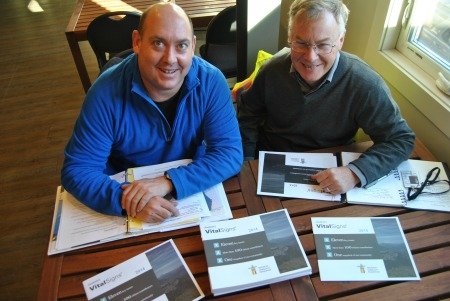
Photo: Gagandeep Ghuman
A community checkup conducted by community foundations across Canada, Vital Signs measures identifies trends and assigns grades in as many as 10 areas critical to quality of life in our town. In an interview with Gagandeep Ghuman, Squamish Community Foundation president Doug Hackett and communication coordinator Dave Thomson explain the process and the intent of Vital Signs.
Tell us about the Squamish Community Foundation?
Well, the Squamish Community Foundation attracts, manages and distributes donations within our community which increases the amount of money available to charitable organisation and other donors. Our primary purpose is to pool donations in a perpetual endowment fund that earns income and the interest on the income goes to community as a grant. Since 2004, we have granted over $178,000 in grants to the community. As of now, we manage over $375,000 dollars in donor funds and distribute the income to registered charities for community projects. We want to grow that to a million and that often marks a turning point for community foundations.
Can you give me an example?
We have a wonderful partner in Valhalla Pure Outfitters. Murray Sovereign gives a percentage of his sales donations back to the Valhalla Pure Fund, which is specifically given for the environment. We accept applications for that environment grant and review them in a sub-committee and provide the cheques. Murray provides us the parameters. The difference with the community foundation is that the money stays in the community forever because what Squamish needs is different from what Whistler needs.
Let’s talk about your Vital Signs project?
Vital Signs is an annual community check-up conducted by community foundations across Canada and its purpose is to provide a reader-friendly look at how our communities are faring in key areas. This year, there were 27 community foundations across the country that launched their own Vital Signs reports. We first brought out our Vital Signs report in 2011 and that came just in time for the local municipal election.
How does the whole process work?
We pay money to a central data bank and you decide what the parameters you want them to provide the data. They give you a long list of parameters and we chose our ten parameters based on the online survey we conducted in the community. For our online survey, we asked the community what were some of the things important to people and that determined our key issues. Once you determine the key issues, you pay to the Vital Signs Canada to send you data and they get it from whatever sources there are available, census, BC stats etc.
Why did you decide on these 11 issues?
We looked at adding some new parameters, but this is mostly what came to us from the survey we had done in the community. We dropped getting around and added personal safety based on the input we received from the community.
What happens next?
There is a cost attached in getting this data, but there is an enormous cost for volunteers. They provide you raw data and to determine and interpret the data is an enormous task. It’s six to eight months of work and it can be hard on the volunteers. We have local non-profits and community groups and experts that are help us compile and interpret the date.
What are some of the issues that stand out?
The biggest one for me is the gap between rich and poor. It drives some of the other indicators that we are seeing. For example, some of the issues we see in public safety are connected to the issue of the gap between rich and poor. The further we see the gap increase, the more we will see an increase in social issues that we don’t want to see. I’m not an expert psychologist to identify the link, but there seems to be a clear connection we can make. Our role isn’t to be an interpreter of this data; we present it to the community and it can be seen in the way you find fit.
How does Vital Sign report help our community?
With limited funding available for all other community initiatives, Vital Signs report is a credible source to provide guidance so our limited funds can actually go towards targeting key issues. It also provides the base to evaluate and collaborate on key issues facing the community. If non-profits groups can work on an issue they can identify, they can make a difference in the community. And that collective impact is something that makes so much sense because we can then direct our limited energy and focus.
What has been the community response to this report?
It’s been good. We printed 1500 copies and we are out of copies. We made sure that everyone in the council got a copy. We made sure that everyone in the council had a copy. We have also had a lot of support from Squamish Savings for this project. We would also like to thank our past presidents, Kevin Haberl and Ian Davies for their skill and support in helping out with Vital Signs. We would also like to thank Carl Ingraham, Celine Jolivet, Sarah Marshall, Jody Villadsen, Dora Gunn, John Howe, Karen Millard, Megan Reynolds, William Roberts, and Devon Guest Robinson and many more volunteers.

